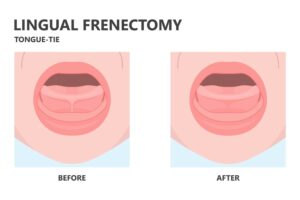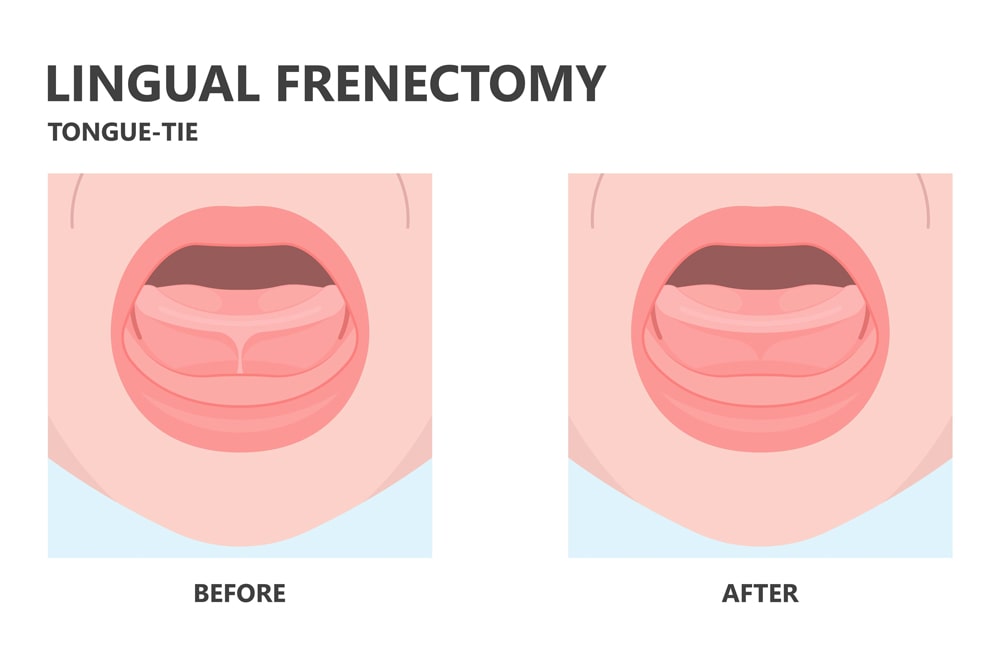Does My Child Need a Lingual Frenectomy?

Under your little one’s tongue is a band of tissues called the lingual frenulum that connects its underside to the floor of the mouth. A tongue tie, also known as ankyloglossia, is a congenital condition characterized by an unusually thick or short frenulum. It can affect how your little one speaks, eats, and swallows. Smile Explorers Pediatric Dentistry may recommend a lingual frenectomy, or tongue tie release, to improve your child’s health and quality of life.
What Are Signs Your Child Has a Tongue Tie?
Signs your child has a problematic tongue tie may vary based on age and the severity of the condition. They may include the following:
- Difficulty latching during breastfeeding or sometimes even bottle-feeding
- Clicking sounds during nursing as your child struggles to latch
- Poor weight gain due to feeding difficulties
- Trouble lifting the tongue to the roof of the mouth or moving it from side to side
- Difficulty sticking out the tongue past the lower lip
- A notched or heart-shaped appearance under the tongue
- Frequent ear infections
- Speech problems, such as difficulty pronouncing certain sounds
- Difficulty chewing or swallowing
Lingual Frenectomy – An Overview
A lingual frenectomy is a minor surgical procedure that involves releasing the lingual frenulum, allowing the tongue to move freely, and improving its range of motion. At Smile Explorers Pediatric Dentistry, we use electrocautery, a safe, effective, and highly successful technique for lingual frenectomies.
During your little one’s frenectomy procedure, we will use a small probe with an electric current to release the lingual frenulum. The heat from the currents seals the blood vessels, which helps prevent bleeding. Electrocautery is quick and relatively painless, with minimal swelling or discomfort and no need for sutures.
Promoting Healing After a Lingual Frenectomy
Lingual frenectomies performed by electrocautery are safe and predictable, with minimal risk of complications. They have an excellent success rate. However, there are things you can do to promote healing and help minimize any discomfort.
Make sure to follow any post-operative instructions we provide. These include using age-appropriate Ibuprofen or Acetaminophen, as directed, to minimize any pain or swelling. One of the most important things you’ll need to do to promote healing is to perform stretching exercises several times a day for about four weeks after your child’s frenectomy. That will help improve the range of motion and prevent the frenulum from reattaching. Our team will demonstrate the stretching exercises to ensure you are comfortable performing them.
Myofunctional Therapy
Our Smile Explorers Pediatric Dentistry team is pleased to work alongside a myofunctional therapist to help improve the results of frenectomy procedures. Myofunctional therapy involves exercises that help train your child’s orofacial muscles to work harmoniously, promoting a proper bite, easy breathing, and a correct facial posture. Depending on your child’s age and unique needs, our team at Smile Explorers Pediatric Dentistry may recommend myofunctional therapy before and after performing a frenectomy.
Lingual Frenectomies Near Me in Glendale, AZ
If you suspect your child has a tongue tie, contact Smile Explorers Pediatric Dentistry to schedule a consultation. Dr. Dave may recommend a lingual frenectomy to improve your child’s health and quality of life. You can always count on our kid-centered team for state-of-the-art, gentle care. We invite you to call us at 623-322-2277 to schedule your child’s appointment today!



